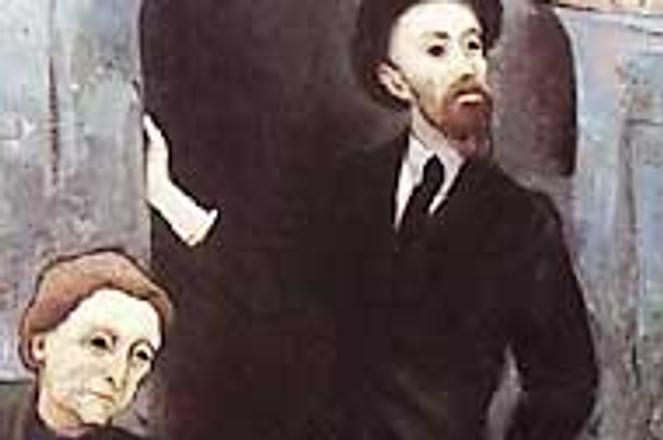ŽIDOVSKÁ ulica (Jewish Street), oil on canvas, 1935-36.photo: Courtesy SNG
THE UNIQUE talent of Slovakia's first, and possibly last, surrealist is the focus of a two-month exhibition at the Košice-based Východoslovenská Gallery. As visitors quickly discover, Imro Weiner-Kráľ, an artist, painter and graphic designer, apparently has no parallel in Slovak art.
Weiner-Kráľ came from a poor business family. Born in western Slovakia's Považská Bystrica in 1901, he is considered the most important personality in Slovakia's Modernist movement between the first and second world wars.
While many other Slovak artists at the time focused on village and pastoral settings, Weiner-Kráľ's creations were dominated by Jewish and urban themes, a choice that art historians have theorised was heavily influenced by his upbringing.
According to art critic Dagmar Srnenská, who has recently published a profile of Weiner-Kráľ, the surrealist's images "are uncommonly sensitive, so their motives seem softer".
Weiner-Kráľ spent the second world war in Paris, where he was engaged as a painter and a political worker by the communist movement. "He was talented in graphics, producing counterfeit documents for himself, his friends and the French communists", said Srnenská. The fake documents, identifying him simply as Kráľ, helped him survive the war. He kept the name Kráľ for sentimental reasons following the conflict.
When the cold war started, he was expelled for unknown reasons from France. According to the curator of the Košice exhibition, Ján Abelovský, the expulsion was probably in retaliation for the deportation of some French diplomats by Slovak authorities.
Weiner-Kráľ then went to Prague, where he tried to cross the border illegally to Germany and was arrested. He spent almost a year in prison, but was later released without having been tried, and lived the rest of his life in Bratislava until his death in 1976.
Having tried to flee, however, Weiner-Kráľ was considered politically suspect by the communists and was not allowed to exhibit his work. His paintings were taken into storage between 1950 and 1970. "He was a very open man who didn't agree with the political powers that were," said Abelovský.
The artist, famous also abroad, is still admired across Europe "because he was a special example of the association between the romantic tradition of the 18th and 19th centuries and modern art after the first world war. He tried to link surrealism with cubism, and all the streams then present in western Parisian art," said Abelovský, who is preparing a book on the artist.
Imrich Weiner-Kráľ exhibition.
Open: Tue-Fri 10:00-18:00, Sat 11:00-18:00, Sun 14:00-17:30 until September 29.
Admission: Sk20.
Východoslovenská gallery
(East-Slovak Gallery),
Alžbetina 22 and Hlavná 27, Košice.
055/622-2647.

